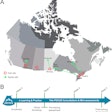In a first step toward updating its recommendation on screening for peripheral artery disease (PAD), the U.S. Preventive Services Task Force (USPSTF) will release a draft research plan for public comment on December 15.
When the research plan is finalized, the USPSTF will use it to guide a systematic evidence review to update its recommendation on PAD screening. In its last recommendation statement released on this topic in 2005, the USPSTF recommended against routine screening for PAD. The draft research plan will be available here.
The USPSTF will also host a webinar on December 15 from 2-3 pm EST to discuss the draft research plan. A USPSTF member will provide an overview of the task force and its recommendation process, present the draft research plan, and provide instructions for submitting feedback and comments on the draft document. The webinar will be limited to the first 200 respondents.
In its 2005 statement on PAD screening, the USPSTF recommended against routine screening, finding only "fair" evidence that asymptomatic PAD in adults could be detected by ankle brachial index, which is a ratio of Doppler ultrasound-recorded systolic pressures in the lower and upper extremities.
At the time, the USPSTF also concluded that the evidence was also "fair" that PAD screening in asymptomatic adults in the general population would have few or no benefits, as PAD's prevalence is low in this group. The task force also found little evidence that treatment of PAD at this asymptomatic stage, beyond treatment based on standard cardiovascular risk assessment, improves health outcomes.
Furthermore, the USPTF found fair evidence that screening asymptomatic adults with the ankle brachial index could lead to some small degree of harm, including false-positive results and unnecessary workups. As a result, the task force concluded that the harms of routine PAD screening exceeded benefits for asymptomatic adults.



















